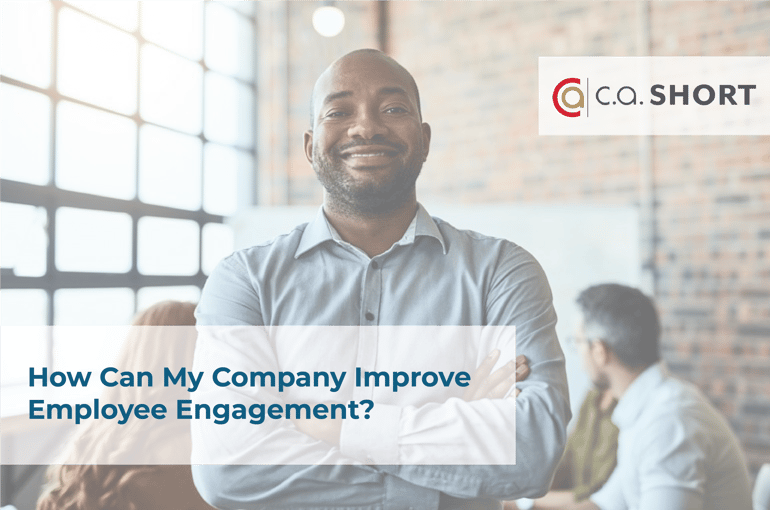
- Introduction
- What Is Employee Engagement?
- The State of Employee Engagement
- The Benefits of Employee Engagement
- Measuring Employee Engagement
- The Fundamental Elements of Employee Engagement
- The Building Blocks of Employee Engagement
- 11 Ways to Improve Employee Engagement at Your Company
- Next Steps
1. The Importance of Employee Engagement
Over the course of C.A. Short Company’s 80+ year history in the employee engagement, recognition, and safety industry, we’ve heard nearly every question imaginable. Yet, there’s one we’re asked more than any other: How can my company improve employee engagement?
This guide is designed to answer that very question.
We’ll begin by taking an in-depth look at what employee engagement is, why it matters, and how we can measure it. Next, we’ll provide guidelines for the foundation and framework every employee engagement plan should include. Finally, we’ll provide you with proven, actionable steps you can use to create a Culture of Engagement at your organization today.
Let’s get started! Or if you would like to read this later, then you can download the full eBook here.
2. What Is Employee Engagement?
Often, businesses confuse employee engagement with employee happiness or satisfaction. While these are also important metrics to track and improve, they are not synonymous with employee engagement.
Instead, we prefer to define employee engagement as the measure of how committed, both emotionally and psychologically, an employee is to their company, its mission, and their co-workers.
Being engaged requires more of an employee than simply coming to work and performing the tasks at hand. Engaged employees aren’t just working for a paycheck. They start each day excited about coming to work because they know they have a direct impact on the success of their company and the well-being of their co-workers.
When the right conditions are met and employees become fully engaged, corporations are capable of achieving tremendous results. We’ll get into these results a bit later, but let’s first examine the current state of employee engagement.
Not ready to read this all now? Download it below and read it later!
3. Unhappy Employee Statistics
 When it comes to tracking employee engagement in the U.S., Gallup is the clear leader. Their State of the American Workplace report has become the gold standard. Unfortunately, the most recent edition doesn’t paint a pretty picture for U.S. employers — and it paints an even worse one for global businesses.
When it comes to tracking employee engagement in the U.S., Gallup is the clear leader. Their State of the American Workplace report has become the gold standard. Unfortunately, the most recent edition doesn’t paint a pretty picture for U.S. employers — and it paints an even worse one for global businesses.
Over the course of 2015 and 2016, Gallup collected data from nearly 200,000 U.S. employees via the Gallup Panel and Gallup Daily tracking, as well as from 31 million respondents in Gallup’s Q Client Database.
What did this wealth of data reveal about employees?
Just 33% of Americans are engaged at work. That number is staggering, especially when compared to employees at the “World’s Best Organizations” – 70% of whom are highly engaged. Of the 67% of employees who are disengaged, nearly a quarter of them are actively disengaged.
When employees aren’t engaged, their companies face a wide range of problems, all of which could destroy a business. This is especially true for organizations located in the healthcare, energy and utilities, manufacturing, warehousing, and transportation industries.
Further complicating matters, less than 25% of employees strongly agree their performance is managed in a way that motivates them to perform outstanding work. This isn’t the only area where workers criticized managers for their lack of leadership.
Here are a few more troubling statistics:
- Just 22% of employees strongly agreed that leadership had a clear direction for their business
- Only 15% of responders strongly agreed their leadership made them optimistic about the future
- 13% of employees strongly agreed leadership communicates effectively with the rest of the organization
So, it should come as no surprise that more than half of all employees in the U.S. are actively looking for another job. For millennials that number is even higher, at 60%. However, when we drill down into those numbers a bit more, we discover an interesting trend.
Just 37% of engaged employees are looking for new jobs or watching for future opportunities. When it comes to actively disengaged employees, 73% are looking to leave their company.
4. The Benefits of Employee Engagement
 When companies invest in employee engagement, their company improves dramatically across many areas. In this guide, we will focus on 10 metrics: absenteeism, turnover, shrinkage, employee safety incidents, patient safety incidents, quality incidents, customer metrics, productivity, sales, and profitability.
When companies invest in employee engagement, their company improves dramatically across many areas. In this guide, we will focus on 10 metrics: absenteeism, turnover, shrinkage, employee safety incidents, patient safety incidents, quality incidents, customer metrics, productivity, sales, and profitability.
Employee Engagement Statistics
The following statistics refer to improvements business units in the top quartile of employee engagement realize when compared to business units in the bottom quartile.
Reduced Absenteeism:
When employees are psychologically invested in their company and co-workers, they’re more likely to come to work on time and even clock in early. As a result, absenteeism rates are 41% lower for highly engaged business units.
Lower Employee Turnover:
Engaged employees have a strong bond with their employer and are far less likely to quit. In high-turnover companies, engagement reduces turnover by around 24%. In low-turnover organizations, turnover improves by more than twice that figure – an average of 59%.
Less Company Shrinkage:
When employees care about their company, they’re far less likely to steal from their employer. Additionally, they work to ensure no one else steals from the business either. As a result, shrinkage typically declines by 28%.
Fewer Safety Incidents:
Regardless of industry, employee engagement leads to a significant decline in employee safety incidents. Engaged employees aren’t just concerned with their own safety; they’re protecting their co-workers as well. This consciousness can lead to a 70% reduction in employee safety incidents.
Fewer Patient Safety Incidents:
Employees aren’t the only ones who are safer. Patient safety incidents at highly engaged healthcare providers reduce by as much as 58%.
Less Product Defects:
Highly-engaged companies produce products of much higher quality than organizations with low levels of engagement. On average, engaged business units experience 40% fewer defects.
Higher Customer Metrics:
Customer metrics – those that indicate improved customer relationships – increase by more than 10%.
Increased Productivity:
Engaged employees don’t just work harder for their organizations, they work more efficiently. As a result, productivity improves by more than 17%.
Boost in Sales:
Customers respond favorably to companies that have higher levels of engaged employees. Typically, sales improve for these companies by 20% or more.
Greater Profitability:
Finally, highly-engaged business units are more profitable business units. Profitability at these organizations improves by an average of 21%.
5. Measuring Employee Engagement
Gallup Employee engagement survey
To improve employee engagement at your organization, it’s a good idea to establish a baseline. When it comes to measuring engagement, we again turn to Gallup. To determine an employee’s level of engagement, they analyze four types of employee development needs — basic needs, individual needs, teamwork needs, and personal growth needs.
The below statements, which respondents indicate they do or do not agree with, are categorized into each of these areas.
| Basic Needs: | Individual Needs: | Teamwork Needs: | Growth Needs: |
|
I know what is expected of me at work.
|
At work, I have the opportunity to do what I do best every day. There is someone at work who encourages my development. |
At work, my opinions seem to count. I have a best friend at work.
|
In the last six months, someone at work has talked to me about my progress.
|
4 Levels of engagement
Depending on how many of these needs are met, an employee can then be classified in one of four ways: fully engaged, engaged, somewhat engaged, and disengaged. Here is a brief description of each classification.
1. Fully Engaged Employees:
Employees are enthusiastic about their work, take ownership of their responsibilities, drive performance, encourage innovation, and actively go above and beyond to propel the company toward success. On average, a fully engaged employee adds 22% better performance and value above the amount of their salary and benefits to your bottom line.
2. Engaged Employees:
Employees are enthusiastic about their work but don’t go above and beyond like fully engaged workers, however, they still make an active effort to contribute to their organization’s goals and values. Workers with this level of engagement typically deliver an organization "value" equal to their salary and benefits.
3. Somewhat Engaged Employees:
Employees are not attached to their work or company. They put time into their work, but because their engagement needs aren’t fully met – they don’t put in the energy and passion of either a “fully engaged” or “engaged” worker. As a result, they are 25% less productive than engaged employees and reduce your bottom line by 25% of their salary and benefits.
4. Disengaged Employees:
Employees are both unhappy and resentful that their needs aren’t being met. As a result, they often attempt to undermine the goals of their organization and to discourage workers who are engaged. Each year, disengaged employees cost companies more than $500 billion, and the individual disengaged employee are 60% less productive than engaged employees and reduce your bottom line by 60% of their salary and benefits.
6. Elements of employee engagement
If your organization is looking to significantly improve employee engagement, you’ll need to customize your approach to meet the goals, vision, and culture of your organization. However, there are some fundamental elements that every strategy should include (via the Enterprise Engagement Alliance):
A Clear Sense of Mission
This one is a no-brainer. For your employees to reflect the values of your organization, they must be able to clearly identify them. If your organization hasn’t clearly defined what it stands for, you need to do so ASAP. Only then can you help ensure that your employees understand their role in your mission!
Well-defined Goals
Define and develop clear individual goals for your employees. Again, it’s very important for your team members to understand what’s expected of them. Far too often, employers expect their employees to be mind readers. This approach rarely, if ever, works.
Emotional Bonding
Humans rarely perform well — and often not at all — when they feel isolated. We are defined by the relationships we form, in both our personal and professional lives. If you want your employees to be engaged and perform at their highest levels, your management team must support your employees and reinforce they are valuable members of the team.
Employee Capability
Have you hired the right people for the right job? Do those employees have the tools to get the job done? Are they confident in their abilities? Don’t just assume the answer is yes – ask them! Keep in mind, not all tools are physical. Resources, knowledge, and training are more important than any piece of equipment. Again, be clear with your expectations.
Fun Company Culture
It’s a shame this element catches people off guard. Having fun is critical to performing at your highest level, and your company should have a culture that makes it possible for employees to have fun. If there’s a spirit of dread and despair at your organization, disengagement will inevitably creep in.
Supportive Work Environment
It’s essential that your employees feel valued and supported. While this is especially true from a top-down perspective, managers aren’t the only ones that should show support. Employees should also receive encouragement and support from their co-workers. One of the best ways to show your employees they’re supported is to provide ongoing feedback and encourage your employees to also praise their co-workers.
Task Value
Human beings must have a sense of purpose. When employees understand that the task they’re performing is critical to the success of an organization, they go above and beyond. Take time to explain why an employee’s function matters!
Frequent Feedback
Employees crave feedback – especially millennials who prefer on-going and frequent feedback more than previous generations. Notice we didn’t say criticism. There is a huge difference. Let your employees know what they’re doing well, as well as areas they can improve. Most importantly, tell them how they can make those improvements.
Equally important, ask your employees for THEIR feedback. Some of history’s greatest innovations began this way!
Send this to a friend by downloading the full eBook now! Click the download button below.
7. How to engage your employees
 An effective employee engagement strategy will also consist of ten key building blocks. Without the following components, a Culture of Engagement will be very difficult to achieve. So, make sure these are areas of focus for your organization.
An effective employee engagement strategy will also consist of ten key building blocks. Without the following components, a Culture of Engagement will be very difficult to achieve. So, make sure these are areas of focus for your organization.
Strong Leadership
Changing your culture isn't an overnight task, and it’s certainly not something you can accomplish by yourself. It will require the ongoing commitment of a strong leadership team – one composed of people who are good managers, have great rapport among the staff, and who are considered influencers within your organization.
Idea: Build an Employee Engagement Task Force or Committee that will meet once a month with the sole purpose of influencing culture in a positive way. You'll want to recruit the most respected executives you can get to sit on your committee. Gather them from C-Levels on down to your front line leaders (yes, front line folks for that badly needed reality check), who can represent all divisions, departments.
Meaningful, Ongoing Assessments
It’s not enough to conduct a survey once and then move on. To create a true employee engagement strategy, you need to routinely survey the engagement levels of your audience. Further, you must be certain that the metrics you’re tracking are the right ones!
This is one of the areas where your company can greatly benefit from partnering with a trusted employee engagement company.
Collaborate and Innovate
Bring your entire team into the fold. Invite participants to contribute their ideas, concerns, questions, or any other thing that might enhance your program. Don’t let the collaboration end there either! You should work each day to ensure you have a Culture of Collaboration and Innovation.
Employee Recognition
To create a successful engagement strategy, employee recognition must be a cornerstone. Managers need the ability to positively reinforce preferred behavior as it occurs in real time. And remember, it’s equally important for employees to recognize their peers as well!
Create a Robust Campaign
Developing a Culture of Engagement – the kind that has the ability to transform organizations – isn’t something you rush into. Take the time to develop your strategy fully before implementation. Often, it helps to work with a company that specializes in engagement and has a proven track record in your industry.
They can help your organization create a plan that has clear goals, strategies, tactics, and measurements.
Communicate, Communicate, Communicate
Communication is CRITICAL to the success of your engagement strategy. Don’t even consider a strategy or solution that doesn’t offer an intranet site or engagement portal. Additionally, this feature must be easy-to-use and specifically designed to increase employee involvement.
Utilize Technology
Technology exists to make our lives easier! Make sure your engagement strategy utilizes technology that can serve as a central hub where everyone can communicate and contribute to the positive appreciation and recognition strategy. Sophisticated technology, like People Are Everything, encourages engagement between executives and employees, managers and their staff, and even peer-to-peer recognition.
Never Stop Learning
You should never stop learning and neither should your employees and managers. One and done approaches never work when it comes to employee engagement. It’s an ongoing effort, and it should be among your organization’s top priorities. Thus, your engagement strategy should be incorporated into ongoing employee training.
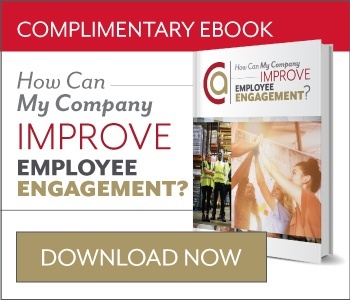
Offer Rewards
Rewards must play a central role in your engagement efforts, and we’re not talking about one-time cash bonuses. These do little to inspire employees and by the time they receive their holiday bonuses, they forget how it is they earned them. Employees should be rewarded for their positive efforts in near real-time.
Determine ROI
To gauge the success of your engagement efforts, you must clearly outline what constitutes as success. Further, you need to assign a value to the actions you’re encouraging and tracking. This makes it much easier to calculate the ROI of your engagement efforts.
11 Ways to Improve Employee Engagement at Your Company:
As we mentioned earlier, your employee engagement strategy should be 100% customized to meet your business’ unique needs. However, there are some universal actions that have been found to boost employee engagement regardless of business, industry, or even sector.
The following 11 tips are tried and true methods that will never let you down.
1. Express Genuine Appreciation
Humans are quick to express their criticism, but they are slow to divvy out praise. This is a huge mistake, as anyone who’s ever read Dale Carnegie’s How to Win Friends and Influence People can tell you.
People need to feel appreciated, and it’s up to you and the entire management team to ensure every team member feels valued.
You don’t have to send someone a thousand roses or buy them a new Mercedes to make them feel special. Sometimes a quick email or a handwritten note of praise can make a world of difference. Never underestimate how much better people perform when they feel they are valued.
Treat every day like it’s Employee Appreciation Day.
2. Recognize Employees Instantly and Publicly
When you see an employee who goes above and beyond to help a co-worker, a customer, or your company’s bottom line, you should heartily recognize them for their efforts. This recognition should occur immediately and publicly.
By publicly recognizing your employees’ actions, you accomplish two very important goals. 1) you reinforce the employee’s good behavior, making him or her more likely to repeat such deeds in the future, and 2) you encourage other employees to replicate their co-worker’s behavior so they, too, can earn such recognition.
Recognize, instantly and publicly.
3. Contribute to a Greater Purpose
You are bigger than your product, your business, and even your industry. Far too often, companies can forget this. They get so wrapped up in profit margins, sales quotas, and the latest market trends that they lose their sense of connectedness.
Make a strategic effort to give back. We’re not talking about writing a big check and giving yourself a pat on the back. We’re talking about recognizing, encouraging, and joining your employees in supporting the causes that mean the most to them.
At C.A. Short Company, we engage in many fun activities throughout the year that helps local and national charities, the community of Shelby, and various causes our employees value. To learn more, you can read about our recent involvement with Relay for Life.
Don’t just see the bigger picture, help paint it.
4. Reward Positive Behavior With a Values-Based Incentive Program
We achieve much more by rewarding positive behavior than we do by punishing negative actions. One of the best ways to promote ideal behavior is to reward employees instantly when you see them going above and beyond.
Traditionally, companies have offered year-end bonuses as a means of rewarding employees for their hard work. However, this reward seldom delivers the results companies are looking for. Usually, this is due to the following reasons:
- Positive behavior should be rewarded when it’s observed – not a year from when the behavior occurred
- Employees tend to view bonuses as an expected portion of their salary and not a reward for specific actions
- Cash is quickly spent, and the employee has nothing to remember the organization by
By contrast, one of the most effective steps your company can take is to provide employees with a values-based employee incentive program. You can give employees on-the-spot award cards or reward employees with a set number of points they can later redeem for the reward of their choice.
Then, when an employee uses or sees the item they chose, they’ll be reminded of the company that gave it to them.
More carrot, less stick.
5. Create a Culture that Makes Employees Proud
To create an engaged workforce, you must first create a culture that makes your employees proud. A company’s culture should be much more than establishing a dress code or writing a few paragraphs in an employee handbook – it should be a cornerstone of not only your engagement strategy, but of your entire business strategy.
This isn’t something you can accomplish overnight, but it is something you can begin working on today. If you need a place to start, we recommend watching this interview with HubSpot’s VP of Culture and Experience Katie Burke.
Katie doesn’t pull punches when she outlines what it took for HubSpot to design a culture that effectively engaged a diverse, multi-generational workforce.
She also covers:
- How to create a culture rooted in transparency and autonomy
- Where most companies go wrong with employee engagement
- How to utilize corporate culture as a proactive catalyst for your organization's growth
Become a culture warrior!
6. Promote Employee Wellness
If your company isn’t doing it already, you need to invest in a quality employee wellness program that encourages and rewards employees for making healthy decisions.
This can have a tremendous impact on both your employees’ health and your company’s bottom line. On average, for every dollar an organization spends on employee wellness, they realize a 6X return in direct savings from healthcare costs.
A comprehensive wellness program that’s integrated into your engagement strategy can also deliver:
- Reduced work-related illnesses – fewer sick employees equals increased productivity
- Reduced sick pay – companies save money that otherwise would have been absorbed by sick pay and lost productivity
- Absenteeism is reduced – employees that eat healthily and exercise regularly experience 27% lower absenteeism rates
- Reduced Workers’ Compensation claims – unhealthy employees file twice as many claims and cost companies over $70 billion a year
Create more win-win scenarios!
7. Offer Years of Service Awards and Offer Them Sooner
While your company should practice recognition on a day-to-day basis, there are certain circumstances that demand a truly special event. Significant work anniversaries is one such example.
When an employee has illustrated their loyalty and commitment to your organization, they should be rewarded. However, we discourage any company from waiting for the traditional 5-year milestone before acknowledging employees.
Improve recruitment and engagement by offering employees Years of Service awards sooner, beginning with the one-year mark. If your company suffers from high levels of turnover, consider offering the awards even sooner. Additionally, make your Years of Service award ceremony something your employees will remember for years to come.
Reward employees for their loyalty — and do it sooner.
8. Encourage Individual Growth
Though they may not voice their desires, every employee wants to learn and grow. Your company should have a very clear plan in place that encourages and promotes employee growth.
You should provide a clearly-defined guide of what it takes to climb the corporate ladder at your organization. You must also recognize that some employees aren’t looking for the corner office – they just want to become more skilled. In addition to offering ongoing training and support, you should also reward and praise employees who are looking to make a greater investment in both themselves and their organization.
Help employees become who they are destined to be!
9. Improve Feedback and Communication
Yearly reviews alone do NOT cut it. Employees desire more frequent feedback and an open channel of communication. It’s impossible to learn and grow if you aren’t sure how you’re performing in the eyes of your employer.
Take the guesswork out of the equation and provide employees with feedback routinely. Additionally, ask them for their feedback. Some of the best innovations and developments have come at the suggestion of non-managerial employees.
Ask for employee feedback...and actually listen to it!
10. Get Help from Specialists
Your company can benefit greatly from working with an organization that’s dedicated to employee engagement and recognition. They can help you hit the ground running and really jumpstart your engagement efforts.
Shop around carefully and keep in mind that all plans aren’t created equally. For your company to truly maximize the benefits of an employee engagement plan, it should be 100% customized to meet the needs of your organization, while encouraging and promoting your values.
Leverage help from those with more experience.
11. Keep Your Employees Safe
Finally, in order for your engagement and recognition efforts to truly pay off, your organization must simultaneously focus on creating a Culture of Safety as well. This approach, which we refer to as Safegagement™, helps our clients deliver tremendous results. You can read about one such example in our article, C.A. Short Company and Sysco Kansas City Prove People Are Everything.
Protect what matters most.
Employee engagement ideas
Thank you for reading our guide on employee engagement. We hope you found it helpful!
To stay up to date on all things related to engagement, you can subscribe to our blog. If you’d like to learn more about the power of employee engagement, recognition, and safety, you can visit our resources page. It’s loaded with great information your company can put to work today!
And if you have any questions about what you have read, are looking for additional ways to boost employee engagement, or think that C.A. Short Company might be the right partner for you, please contact us today. We’d love the opportunity to help your company!
Editor's Note: This article was originally published on August 24th, 2018 and has been recently updated.


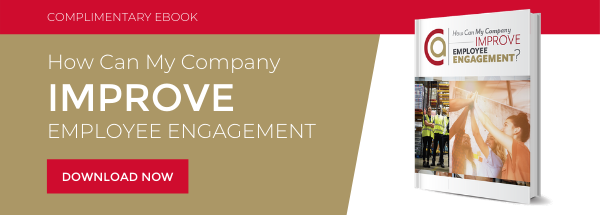
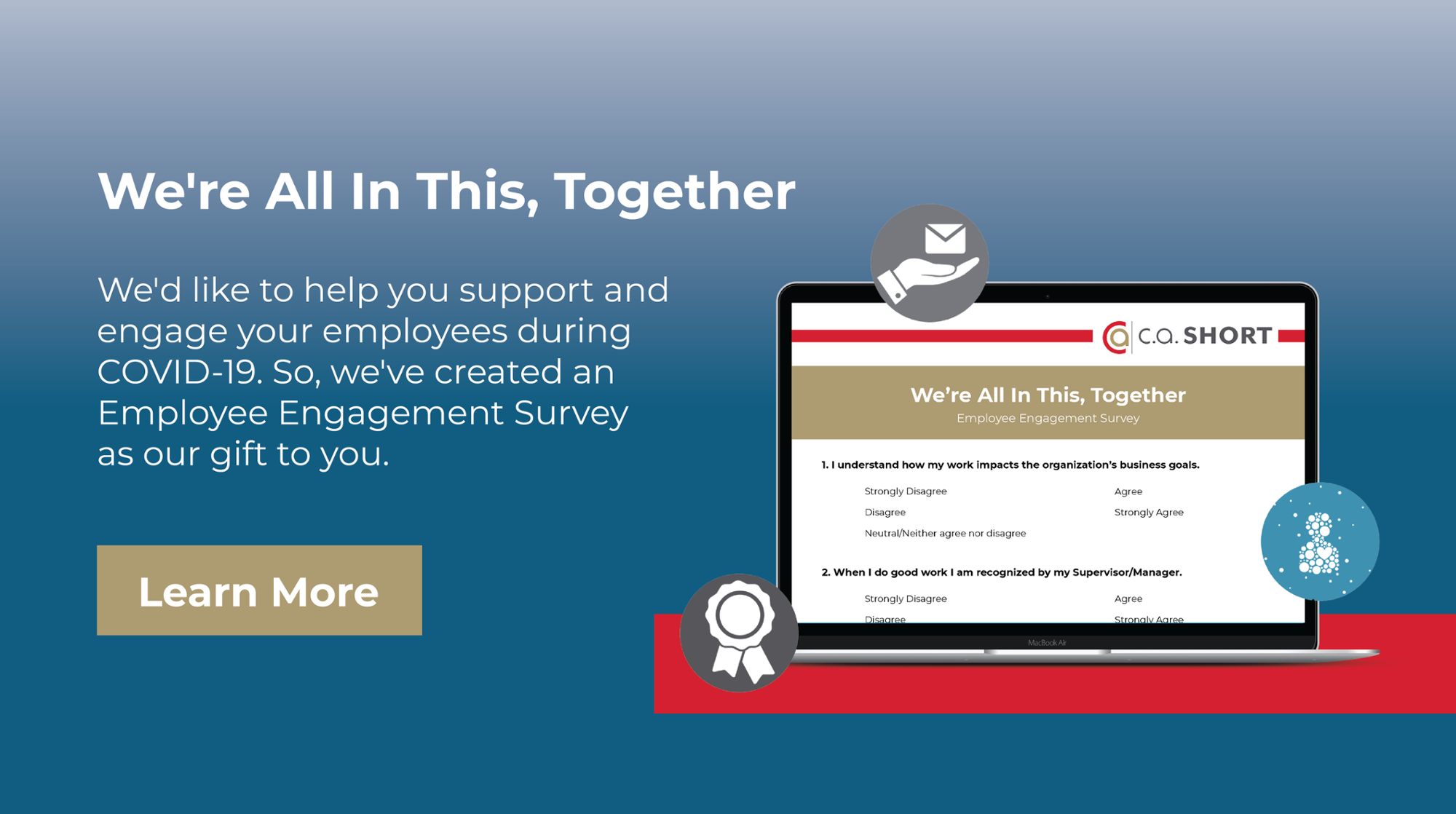
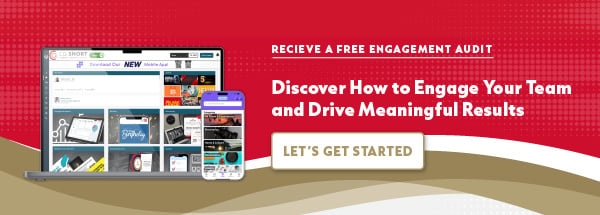
.png?width=70&name=Untitled%20design%20(11).png)


.jpg)

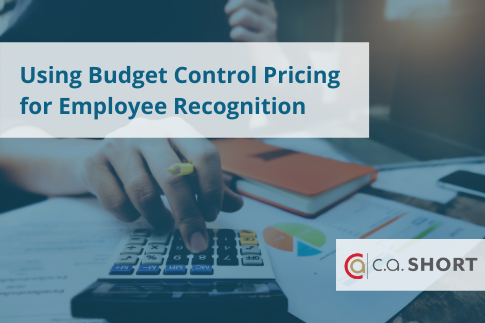

SHARE